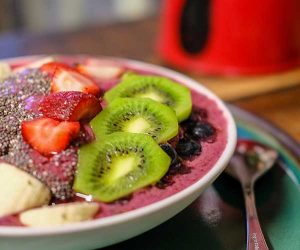Getting excited about Nettles
It might seem weird to eat a ‘dangerous weed’, but people have been doing it for hundreds of years. As an energy tonic, nettles are revered. In springtime you may find groves of stinging nettle, often growing in rich soil in slightly shady places. Rather than avoiding them, arm yourself with a good pair of gloves and reap the benefits!
Nettle is a weed to some and a valuable healing herb to others.The generic name comes from the Latin word ‘uro’, meaning ‘I burn’, the most distinctive quality of this surprising plant. Some of you may recognise the name Urtica Urens as the homeopathic remedy, utilised in – guess what – cases of itching and stings.
Why eat nettles?
Nettles are one of the most powerful iron sources in the vegetable kingdom.
Great for anaemia, for during menstruation (to top up departing iron stocks) and as a general blood tonic. Whenever you feel run down, or tired, think nettles!
Eating nettles or drinking the tea makes your hair brighter, thicker and shinier; it makes your skin clearer and healthier, good for eczema and other skin conditions. Nettle tea is also a tonic for house or garden plants!
Nettle is also delicious as a green leafy vegetable, not perhaps on its own, but in all manner of sauces and baked
dishes. They’re ten percent protein, more than any other vegetable, perhaps with the exception of hemp.
It is wonderful in frittata or quiche in place of spinach (and much more nutritious than this reputable ‘Popeye muscle food’.)
How to collect nettles?
Collect nettles using work or rubber gloves, and wear a long-sleeved shirt. If you happen upon nettles when you have no gloves, put your hand inside a plastic bag.
The young leaves are the best part of the plant. They come off most easily if you strip them counter-intuitively, from the top down. Pick in quantity when you find them in larger amounts and then steam them, freeze them, dry them and put them in soups, stews, and other dishes. Clean and chop nettles wearing rubber gloves. Once you’ve cooked or blended them a little, the stingers are deactivated, and the plant becomes wonderfully edible.
When is the best time to collect nettles?
The best time to collect nettles is in spring, before they flower. It is said that there nutritive qualities are less potent after flowering and they may be bad for the kidneys.
If you get stung remember “Nettle in, dock out!” say the English. Plantain and dock both work well to relieve nettle stings. Surprisingly some people (masochists?) actually find nettle stings invigorating, and use them to wake up the body!
A few nettle recipes
Nettle and potato soup
Fry 1 leek, 2 cloves garlic and 1 onion in olive oil until soft and sweet:
Add: 3 cups organic vegetable stock (Rapunzel brand or homemade), 3 large diced
potatoes, 3 cups of washed nettle leaves, 2 bay leaves, salt and pepper to
taste. Simmer slowly until soft.
To serve. Add yoghurt to each bowl.
Creamed nettles
Steam nettle leaves. Mix with fried onions and nut cream. Add spices if you like. Yummy. (Nut cream is made by blending your choice of nut with 1½ times the water. Strain through muslin if you want it really smooth, or just use as is.
Nettle dressing
You may think it’s impossible to eat nettles live without developing a painful swollen tongue condition! However when well blended, the stings are de-activated. Here is a yummy raw recipe for nettles.
1/4 cup washed nettle leaves
Juice of 3 oranges
2 teaspoon honey
2 T cider vinegar
1 T shoyu
2 T tahini
1 teaspoon fresh chopped ginger
Water to thin to desired consistency.
Blend until smooth. Serve with a green salad.
PS Nettles are fab in quiches and frittatas; use like spinach!


